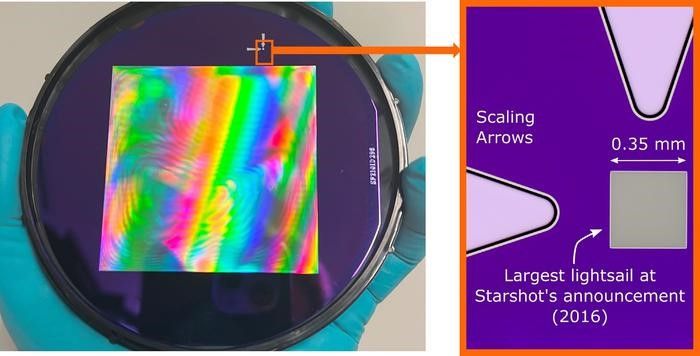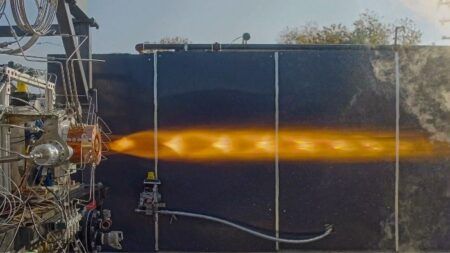Researchers at TU Delft in the Netherlands and Brown University in the USA have developed scalable nanotechnology-based lightsails that could support future advances in space exploration such as missions to Mars.
The lightsails use new materials and production methods to create the thinnest large-scale reflectors ever made. The research was published this week in the journal Nature Communications
Lightsails use laser-driven radiation pressure to propel spacecraft at high speeds. Unlike conventional nanotechnology, which miniaturizes devices in all dimensions, the lightsails are nanoscale to a thickness of about 1/1000th the thickness of a human hair but can extend to large-sized sheets.
The current prototype measures 60mm x 60mm and is 200 nanometres thick, covered in billions of nanosized holes, and represents a significant step forward in large-scale lightsail fabrication. The team combined neural topology optimization techniques and advanced fabrication methods to create the prototype.
“It’s not just its high aspect ratio that makes this material special, it’s the simultaneous combination of large scale and nanoscale in the same material that makes it lightweight and reflective,” said Dr Richard Norte, associate professor at TU Delft.
“We have developed a new gas-based etch that allows us to delicately remove the material under the sails, leaving only the sail. If the sails break, it’s most likely during manufacturing. Once the sails are suspended, they are quite robust.
“This is not just another step in making things smaller, it’s an entirely new way of thinking about nanotechnology. We are creating high-aspect-ratio devices that are thinner than anything previously engineered but span dimensions akin to massive structures.”

Testing lightsails from picometers to lightyears
If scaled up, the lightsail would extend over the length of seven football fields with a thickness of only a millimetre. Probes propelled with the developed lightsails could then – theoretically – reach Mars in several days. However, such vast distances remain a long term goal for the future.
Recent testing has shown that similar lightsails can be propelled over much smaller distances measured in picometers. Norte and his team are now preparing experiments to push the membrane sails across distances measured in centimetres against Earth’s gravity.
“It might not sound like a lot, but this would be 10 billion times farther than anything pushed with lasers so far,” said Norte.
Beyond space exploration, the materials could be used for experimental physics. The ability to accelerate masses to high velocities offers unprecedented opportunities to study light-matter interactions and relativistic physics at macroscopic scales.
“This EU-funded research places Delft at the forefront of nanoscale material science,” Norte said. “Now that we can make these lightsails, we are exploring what we can do with today’s capabilities in nanofabrication, lasers, and design.
“In some ways, I think it might be just as exciting as missions beyond the solar system. The nanotechnology behind this question is certain to open new avenues of interesting research.”
The research is part of the Breakthrough Starshot Initiatives, which aim to send gram-scale microchip probes to Alpha Centauri within 20 years, propelled by laser-driven lightsails at a fifth of light speed to enable interstellar exploration beyond the solar system. Starshot was launched by Yuri Milner and Stephen Hawking in 2016.






